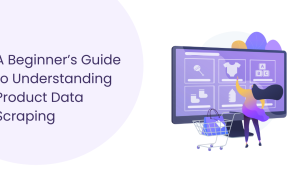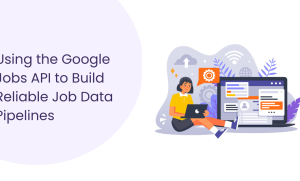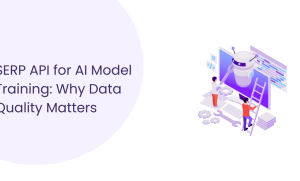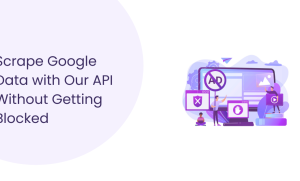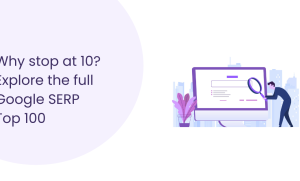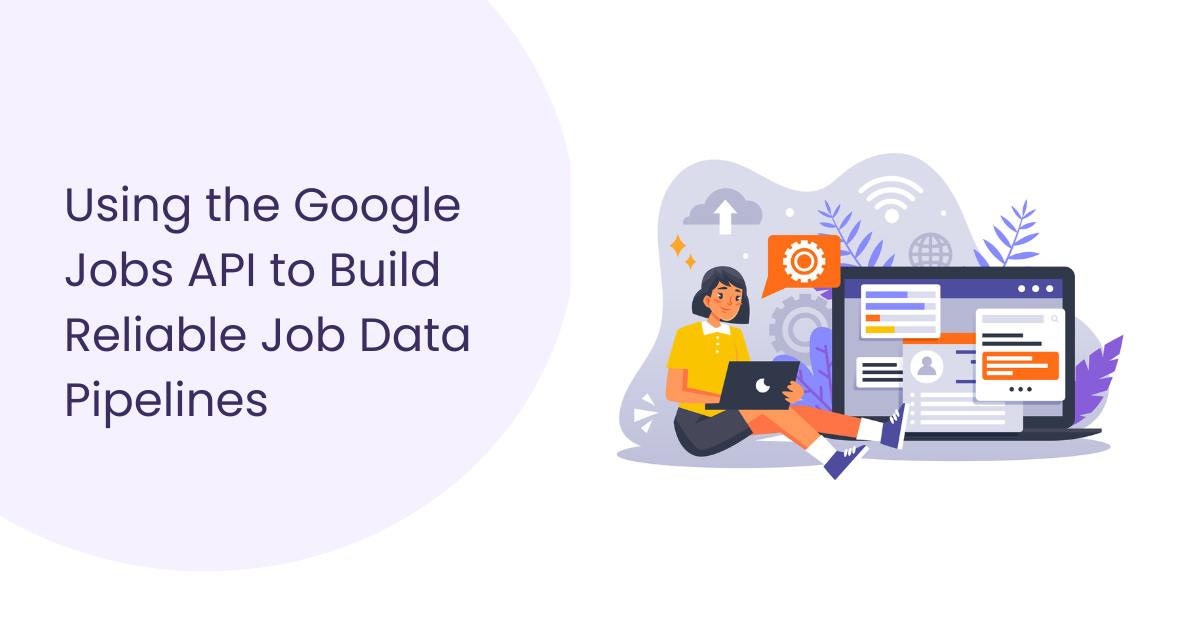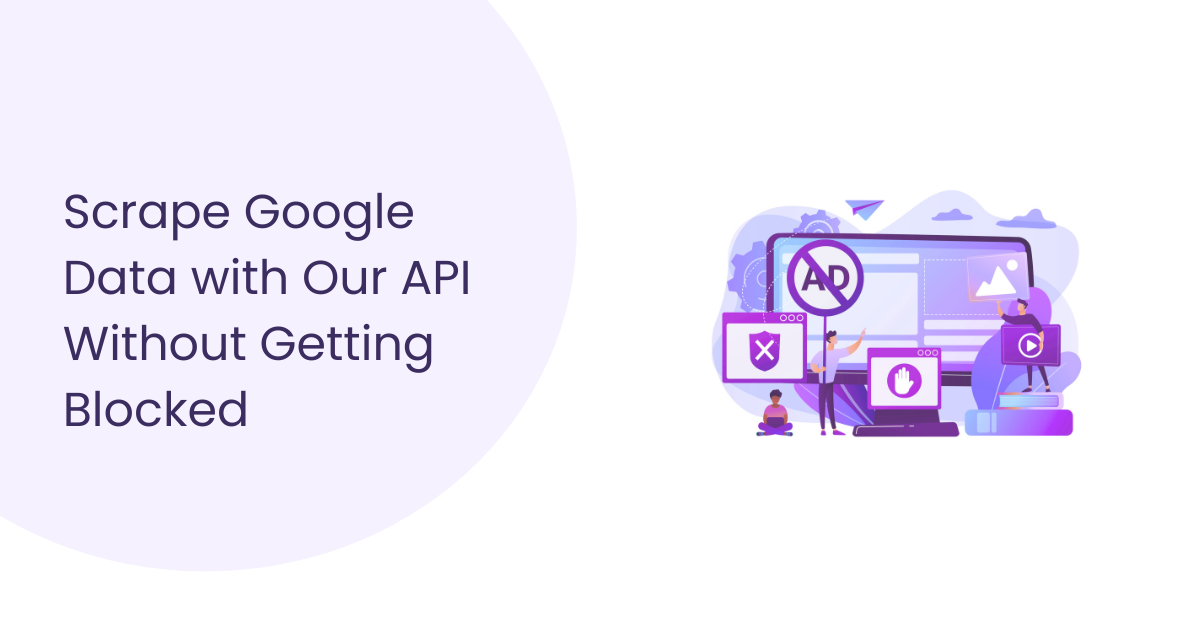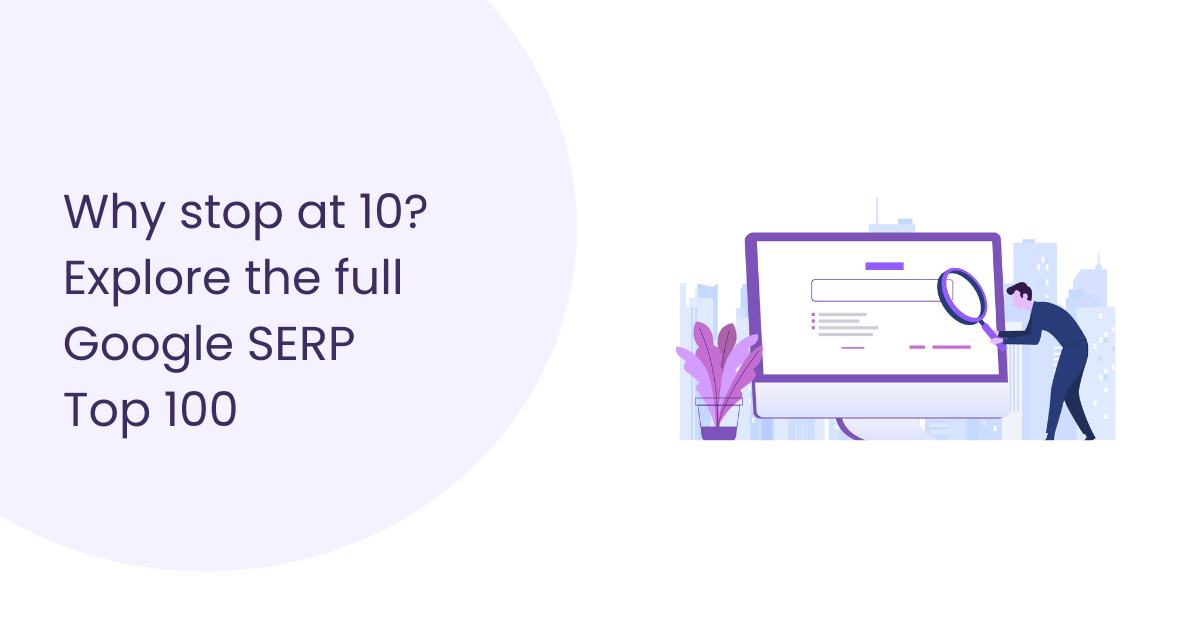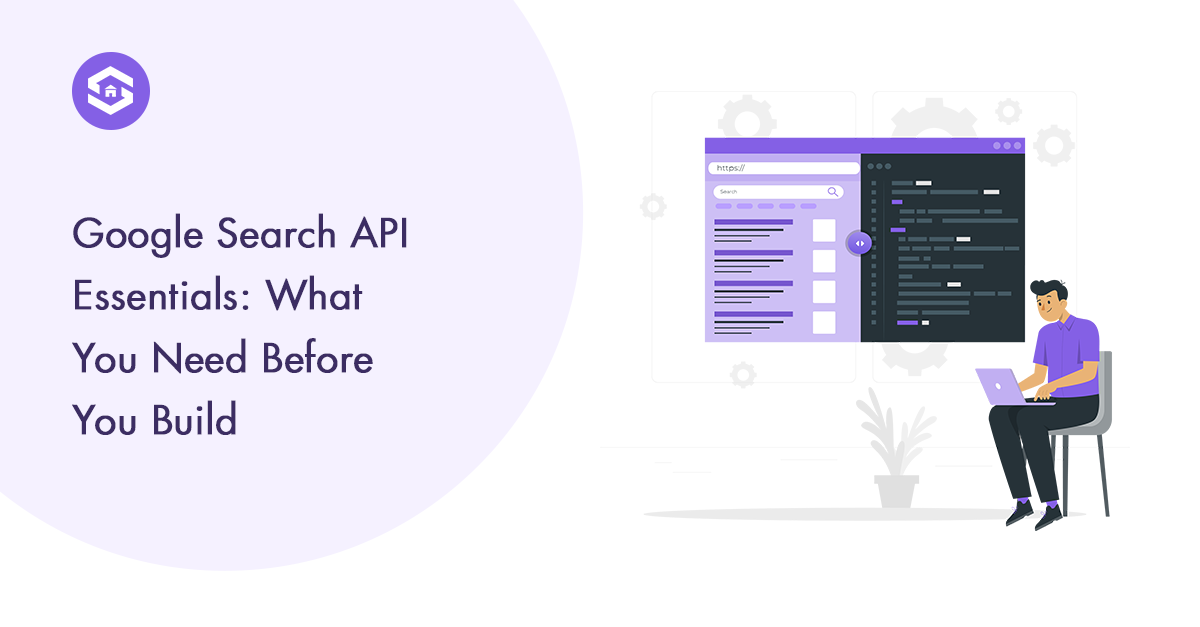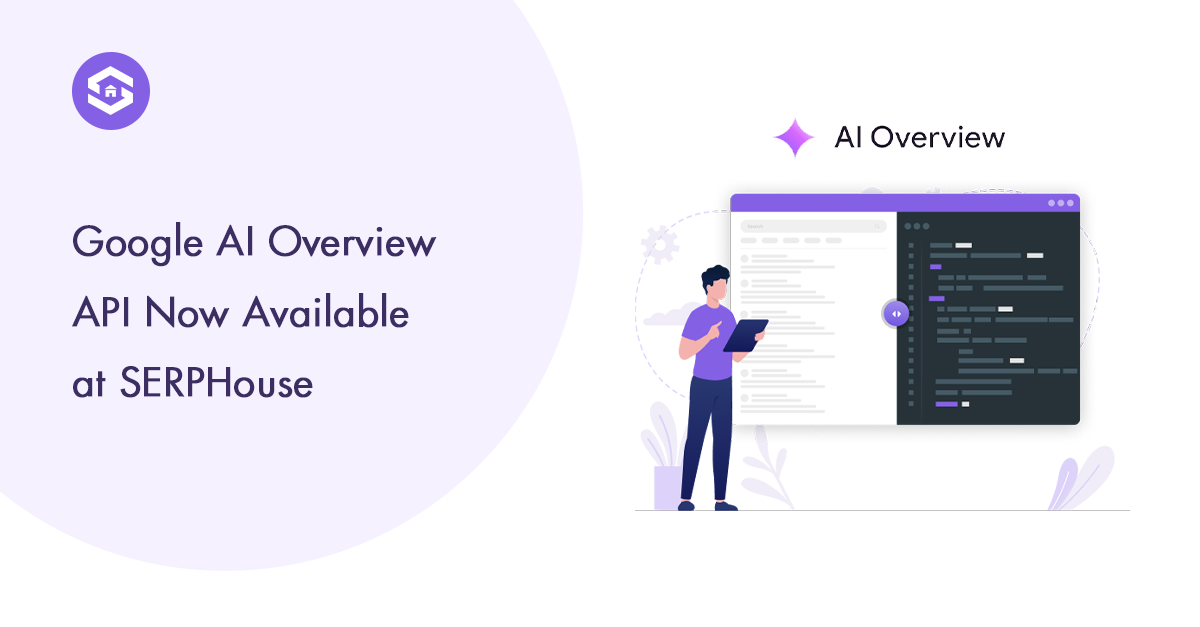Table of Contents
Table of Contents
Do you Know What SERP API is?
How Google SERP API works: SERP APIs (Search Engine Results Pages) access search engine data programmatically. They mimic user searches, extract results (URLs, titles, snippets), and deliver them in structured formats (JSON, HTML). They allow real-time insights, competitive analysis, and SEO research through various search parameters and locations.
SERP API is like a digital Sherlock Holmes, a virtual detective who uncovers the secrets of search engine results. It is a tool that uncovers the hidden treasures of web pages and ads, helping developers understand the complex world of online rankings.
Need a Virtual Business Detective? SERPHouse is here to elevate your success. Try our SERP API services today!
- SERP API, short for search engine results page API, is like a magical tool for developers, Marketers.
- This helps them to peek into search engines like Google, Bing and Yahoo.
- What is magic? This reveals all search results.
- You’ll learn about regular results, paid ads, and those awesome featured snippets.
- It’s like a cheat code to see what’s on a search page.
In this blog, we will mostly understand SERP API by taking the example of Google.
If you’re looking to explore Google’s search results, don’t miss the speed and seamless integration of our Google Search API. Now, take it for a spin!
Understanding SERP Features & Components
Understanding the different components and types of SERP features is important for users and website owners, as it can affect how information is delivered and how websites are ranked in search results. Learn more about how Google SERP API works.
Organic search results: Standard search results displayed in a list format. The search engine’s algorithm ranks them based on their relevance to the user’s query.
Paid search results: These ads appear at the top or bottom of the SERP. Advertisers pay search engines to display their links when specific keywords are searched.
Featured Snippets: These are highlighted information boxes that provide short answers to questions. Featured snippets provide a quick and direct answer to a user’s question.
Knowledge Graph: Some SERPs may include a Knowledge Graph, a panel on the right side of the page that summarizes information about a query. This is useful for questions about famous people, places or things.
Image and video carousels: For image and video searches, SERPs can display carousels that allow users to view images or videos related to the query.
News results: SERPs may include a section dedicated to news articles and updates to news-related queries.
Shopping results: When searching for products, a shopping section may appear with images, prices, and links to purchase the item online.
SERPs change with search engine, location, and query. Search engines update to provide better information to users.
Comparison with Manual SERP Tracking
Manual SERP tracking involves searching for keywords on Google and tracking search rankings and other metrics.
While manual SERP tracking can be helpful for small-scale SEO projects, it is often time-consuming and less accurate than using Google SERP API.
Here are some of the key differences between manual SERP tracking and using SERP Scraper:
Data Accuracy
It provides businesses with more accurate and reliable data than manual SERP tracking.
Scalability
It is scalable and can be used for large-scale SEO projects, while manual SERP tracking suits small-scale projects.
Efficiency
It can automate SEO tasks, increase business efficiency. At same time, manual tracking istime-consuming.
Here’s a Step-by-Step Overview of How Google SERP API Works
1. API Request
Developers send an API request to Google’s servers, specifying the search query, location, and other parameters.
2. Data Retrieval
Google’s servers process the request and retrieve the search engine results from the data.
This data can include search rankings, featured snippets, local search results, and other essential metrics.
3. Data Parsing
The retrieved data is parsed and transformed into a format the developer can quickly analyze and visualize.
4. Data Analysis
Developers can analyze and use the retrieved data to improve their SEO strategy.
This can include tracking keyword rankings, identifying areas for improvement, or benchmarking performance against competitors.
Key Features and Functionality of SERP Scraper API
APIs are necessary to access search engine data. They capture organic and paid results, offer location-specific options, and enable customizable data filtering.
This versatility is important for businesses and marketers to monitor visibility, measure advertising, target local audiences, and get tailored insights.
SERP APIs keep you up to date as search engine algorithms change.
- Retrieving Organic Search Results:
- Accessing Paid Search Results (Ads):
- Handling Location-Specific Results:
- Filtering and Customizing Data:
Read more: Complete key features and functionality of SERP API.
Which Industries Can Get Benefit & Why It Is So Important?
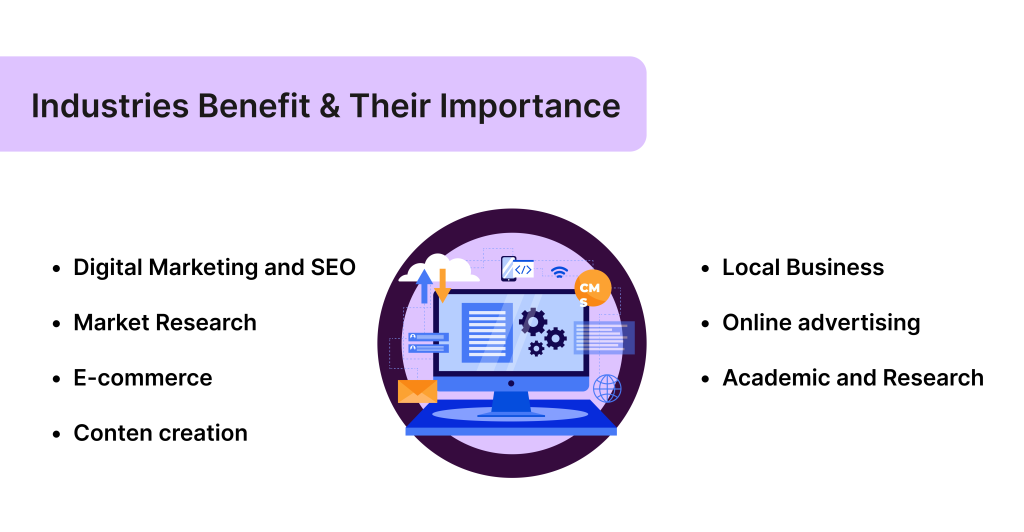
APIs offer substantial advantages to all businesses or industries.
These APIs enable businesses to access and extract real-time data from search engine results pages, particularly those of significant search engines like Google. This data is invaluable for making data-driven decisions and optimizing operations.
Here’s more detail on their benefits to these industries:
- Digital Marketing and SEO
- Market Research
- E-commerce
- Content creation
- Local Business
- Online advertising
- Academic and Research
SERP APIs play a crucial role in helping businesses and professionals stay competitive, make informed decisions, and adapt to evolving user behaviours and search engine algorithms.
This real-time data-driven approach can significantly enhance their overall performance and market presence.
Benefits of using an API for SERP data
Structured Data:
SERP APIs provide data in a structured and machine-readable format (e.g., JSON), making extracting and using specific information from search results more accessible.
Efficiency:
APIs are more efficient for data retrieval compared to web scraping. They eliminate the need to download entire web pages, saving time and bandwidth.
Reliability:
API are generally more reliable because they are designed for programmatic access. Changes to the API are typically communicated through documentation, giving developers time to adapt.
Consistency:
API responses are consistent, ensuring that the data remains in a standard format, regardless of search result’s appearance variations.
Access to Additional Features:
Many SERP APIs offer advanced search engine features, such as location-based results, language settings, and filtering options, allowing for more precise data retrieval.
Compliance:
Using an API often ensures compliance with website terms of service and legal requirements, as it allows for controlled and authorized access to data.
APIs are precious for developers and businesses that require consistent and up-to-date information from search engine result pages.
SERP API Use Cases:
Some use cases of SERP API:
- SEO Tracking: Monitor your site’s keyword rankings and optimize your SEO.
- Competitor Analysis: Compare your performance with rivals and fine-tune your strategy.
- Market Research: Gather insights on search trends and content rankings.
- Content Optimization: Track your content’s performance and adapt your strategy.
- Local SEO: Ensure visibility for local businesses.
- Ad Campaigns: Evaluate PPC ad performance against organic results.
- Mobile SEO: Monitor mobile rankings for a mobile-friendly site.
For a deep dive into these applications, check out SERP API use cases.
Working with SERP API Data
Working with SERP APIs involves requesting data, parsing JSON responses, and integrating it into your apps. Discover more about how the Google SERP API works. Here’s the structure:
API Request:
- Endpoint: The URL with search parameters.
- API Key: Often required for authentication.
- HTTP Method: Typically, use GET for data retrieval.
API Response:
- JSON Format: Data usually arrives in JSON.
- Data Fields: Contains info on search results, URLs, rankings, and more.
Handling and Parsing JSON Data:
You can use programming languages to send requests to the SERP API and parse the JSON data in the response. Here’s a sample Python code using the requests library to make an API request and parse the JSON response:
Sample Code and Programming Languages for Integration:
Depending on your preferences and requirements, you can integrate SERP API data into your applications using various programming languages.
Here are some commonly used languages:
- Python
- JavaScript
- Ruby
- PHP
- Node.js
- Curl
Remember to consult the documentation provided by your specific SERP API provider for detailed information on their API endpoints, request parameters, and response structure.
Best Practices & Quick Tips of SERP API Usage:
API Security and Authentication:
- Keep API keys safe.
- Securely store keys.
- Use HTTPS for encryption.
Avoiding Rate Limits and IP Blocks:
- Know rate limits.
- Implement backoff.
- Use proxies if allowed.
Error Handling and Troubleshooting:
- Monitor status codes.
- Handle exceptions.
- Keep logs for review.
Legal and Ethical Considerations for SERP Data:
- Respect Search Engine Policies: Comply with terms of service, robots.txt files, and use accurate user agents.
- Data Privacy and GDPR: Prioritize user consent, anonymize personal data, adhere to data retention policies, and navigate international data transfer rules.
- Crawler Ethics: Show respect to websites through non-disruptive crawling, rate limiting, and proper attribution. Avoid hotlinking and use data for legitimate purposes.
For an in-depth exploration of these considerations, read more about SERP API Compliance.
Challenges and Limitations of SERP APIs:
Data Inaccuracies: SERP data can change frequently, affecting real-time accuracy.
Algorithm Variability: Search engine updates and personalization impact results.
Scalability and Cost: Consider rate limits, latency, and budgeting.
Incomplete Data: Limited data types and geographic constraints can be limiting.
The future of SERP APIs:
- Voice and Conversational Search: Enhanced results for voice queries.
- Visual Search Integration: Incorporating image-related data.
- Mobile SERP Focus: Optimized for mobile-friendly, local, and app developments.
- Rich SERP Features: Extracting data from featured snippets and knowledge panels.
- User Behavior Analysis: Providing insights for content strategies.
- Structured Data Formats: Offering more detailed structured data.
- AI and Machine Learning Integration: Advanced data analysis.
Stay adaptable and integrate with emerging tech for future success.
Conclusion and Recommendations:
Working with Search Engine Results Page (SERP) APIs offers businesses and digital marketers many opportunities. How Google SERP API works, these versatile tools are essential for SEO tracking, competitive analysis, trend analysis, and optimization.
Understanding the API request-response structure and following best practices is vital for successful integration. Challenges such as data fluctuations, algorithm changes, and data limitations are part of the landscape, so being prepared is essential.
Ethical considerations, including respect for websites and data privacy, must guide your approach to using SERP data.



